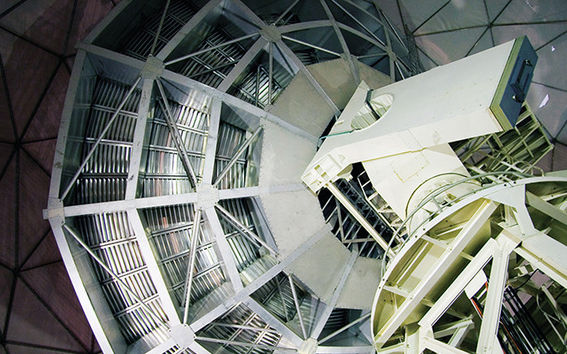Academy of Finland granting funding for a joint research project of Aalto University and Finnish Geospatial Research Institute

A joint research consortium of Aalto University and the Finnish Geospatial Research Institute (FGI) is developing a new method in which the Earth's position can be determined more accurately than before. The purpose of the project is to improve the accuracy of very long baseline interferometry (VLBI) observations.
The VLBI technique combines signals emitted by radio sources in distant space (quasars) that have been picked simultaneously by radio telescopes in different parts of the globe. With this technique, both the structure of the quasars and the location of the telescopes can be measured with an extremely high level of accuracy. VLBI measurements are used in astronomy and geodesy. The observations made in geodetic measurements are used to monitor the Earth's position and the maintenance of the global coordinate system, which provide the basis for the use of positioning satellites. As the system becomes more accurate, the effectiveness of satellite navigation is also enhanced. An accurate coordinate system also provides an essential basis for observing a large number of global changes.
"The project tackles the time-dependent and frequency-dependent structure of quasars as a factor adversely affecting the measurement accuracy. This has been previously overlooked and it has become a key issue in the efforts to achieve major improvements in the accuracy and stability of the coordinate systems. I believe that the methods that we have developed for astronomical VLBI observations will significantly boost the efforts to find a solution to this problem,” says Tuomas Savolainen, director of the consortium.
At Aalto University's Metsähovi Radio Observatory in Kirkkonummi, astronomical and geodetic VLBI measurements are carried out on a regular basis together with international observation networks.
The Research Council for Natural Sciences and Engineering selected 70 new Academy projects for funding in the autumn 2017 application round. A total of about EUR 39.5 million in funding is granted to the Academy of Finland projects and most of this goes to four-year research projects. Some 15 per cent of all funding applications were approved.
Inquiries:
Tuomas Savolainen, Academy Research Fellow
[email protected]
Read more news

Get to know us: Associate Professor Maria Sammalkorpi
Sammalkorpi received her doctorate from Helsinki University of Technology 2004. After her defence, she has worked as a researcher at the Universities of Princeton, Yale and Aalto.
Aalto computer scientists in ICML 2024
Computer scientists in ICML 2024
Getting bacteria into line
Physicists use magnetic fields to manipulate bacterial behaviour